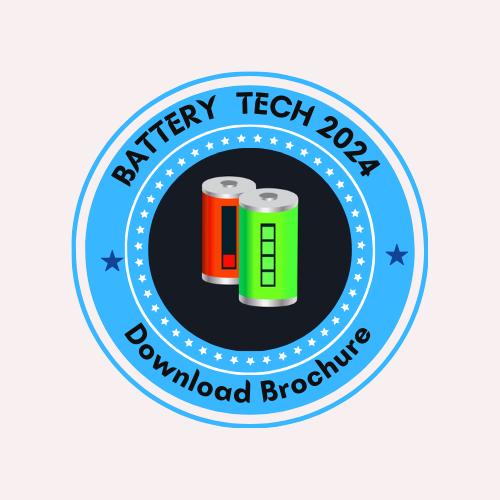Call for Abstract
Scientific Program
6th International Conference on Battery and Fuel cell Technology, will be organized around the theme “Powering the Future: Innovations in Energy Storage and Sustainability”
Battery Tech 2024 is comprised of keynote and speakers sessions on latest cutting edge research designed to offer comprehensive global discussions that address current issues in Battery Tech 2024
Submit your abstract to any of the mentioned tracks.
Register now for the conference by choosing an appropriate package suitable to you.
Dual-ion batteries working mechanism of DIBs is different from that of traditional LIBs, where cations and anions both participate in the intercalation and deintercalation processes with the low-cost graphite as both cathode and anode materials and anions are intercalated/deintercalated into the anode and cathode during the charge/discharge process, respectively.
The concept of a bioelectric battery that could be directly implanted into the body with body fluid as electrolyte has existed since the 1970s as body fluids contain various ions suitable for use as electrolyte. The first biodegradable battery with bioresorbable metallic electrodes was reported by Rogers' group in 2014.
Battery is a device consisting of one or more electrochemical cells with external connections connected to energize the electrical devices. A battery has a cathode, and an anode. The name "battery" commonly denoted to a device composed of multiple cells, yet the procedure has advanced to additionally include devices consisting of a single cell.
Most battery types employ aqueous electrolytes since the invention of Voltaic piles in the late 18th century. To date, two battery technologies dominate nearly the entire market of batteries they are lead–acid batteries and LIBs. It is predicted by Bloomberg NEF that the global storage capacity excluding pumped hydro storage (PHS) will increase from 9 GW currently to more than 1095 GW
Presenting large batteries for stationary applications, e.g. energy storage, and also batteries for hybrid vehicles or different tools. Secondary Battery such as Lithium batteries are used in various types of mobile devices, including communication equipment, computers, entertainment devices, power tools, toys, games, lighting and medical devices.
Nano batteries are fabricated batteries employing technology at the Nano scale, a scale of microscopic particles that amount less than 100 nanometres or 10−7 meters. In contrast, out-dated Li- ion battery uses active materials, such as cobalt-oxide, with atoms or particles that range in size between 5 and 20 micrometres (5000 and 20000 nanometres - over 100 times Nano scale).
Fuel cells are categorized mainly by the kind of electrolyte they employ. This classification determines the kind of electro-chemical reactions that take place in the cell, the kind of catalysts required, the temperature range in which the cell operates, the fuel required, and other factors
Fuel cells at present outlines fuel cells for transportation as any units that deliver propulsive electricity to a vehicle, directly or indirectly. Forklift trucks and other goods control vehicles such as airport luggage automobiles, Two- and three-wheeler automobiles such as scooters, light duty vehicles.
Microbial fuel cell (MFC) research is a rapidly evolving field that lacks established terminology and methods for the analysis of system performance. This makes it difficult for researchers to compare devices on an equivalent basis. The construction and analysis of MFCs requires knowledge of different scientific and engineering fields, ranging from microbiology and electrochemistry to materials and environmental engineering.
Proton exchange membrane fuel cell (PEMFC) is considered as one promising clean and highly efficient power generation technology in 21st century. Current PEMFC operating at low temperatures (<80 °C) encounters several difficulties, such as CO tolerance, heat rejection, which can be, to a great extent, surmounted at higher temperatures (120–150 °C).However, the higher temperature conditions are much more challenging to implement, particularly with regards to the durability of the cell component materials.
Battery electric vehicles (EVs) (BEVs) are highly expected in China for reducing environmental emission in the transport sector because of BEVs’ zero emission during use and high energy efficiency. This chapter first reviews the current situations of EVs’ ownership and usage in China and then analyzes the attitude and purchase intention to BEVs by considering the impacts of various BEV ownership stimulation policies in China (such as license-plate lottery and BEV subsidies).
Battery raw materials are used in the production of various types of batteries, which are used in a wide range of applications, including: Consumer electronics: Lithium-ion batteries are commonly used in smartphones, laptops, tablets, and other consumer electronics devices.

